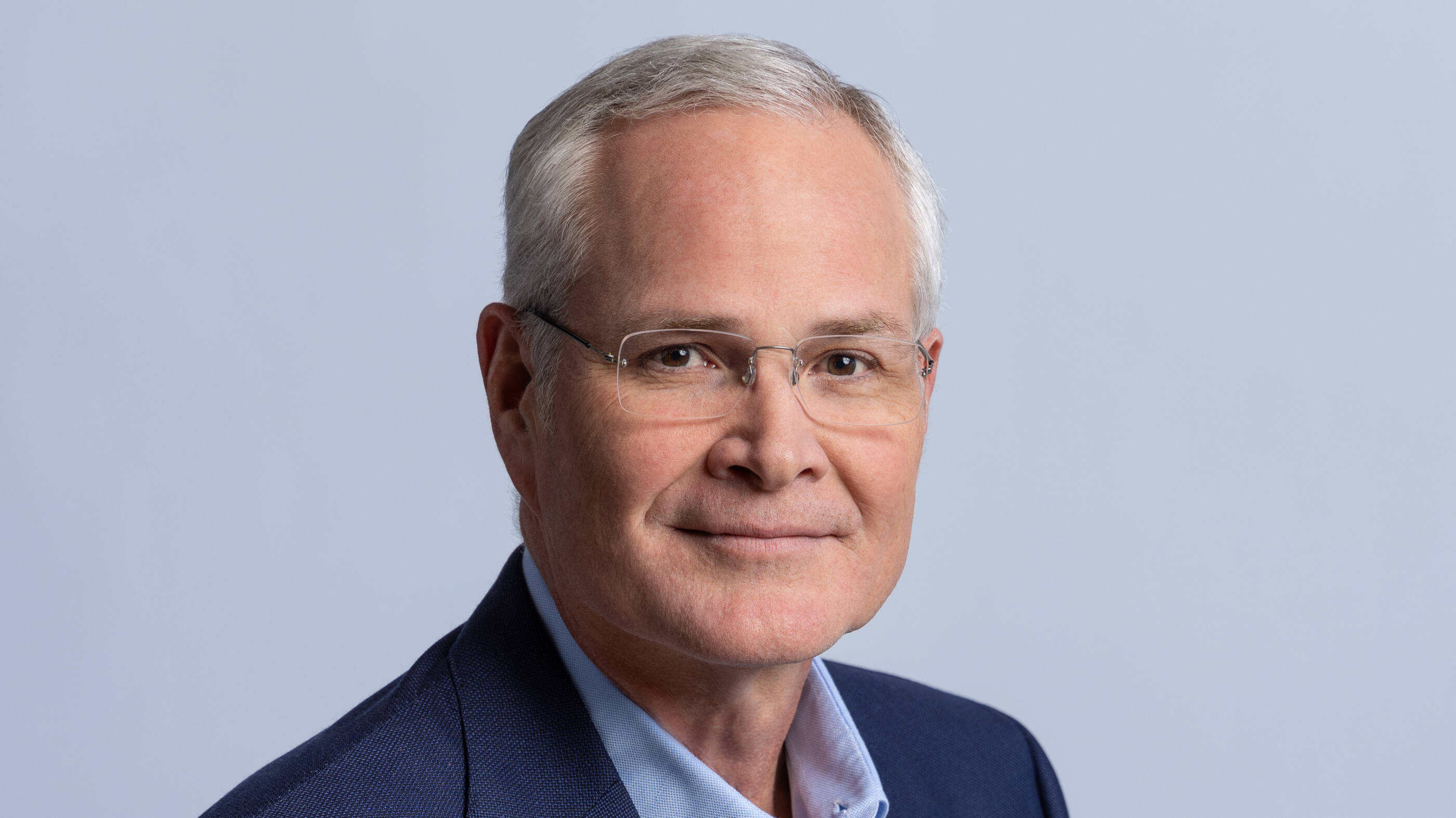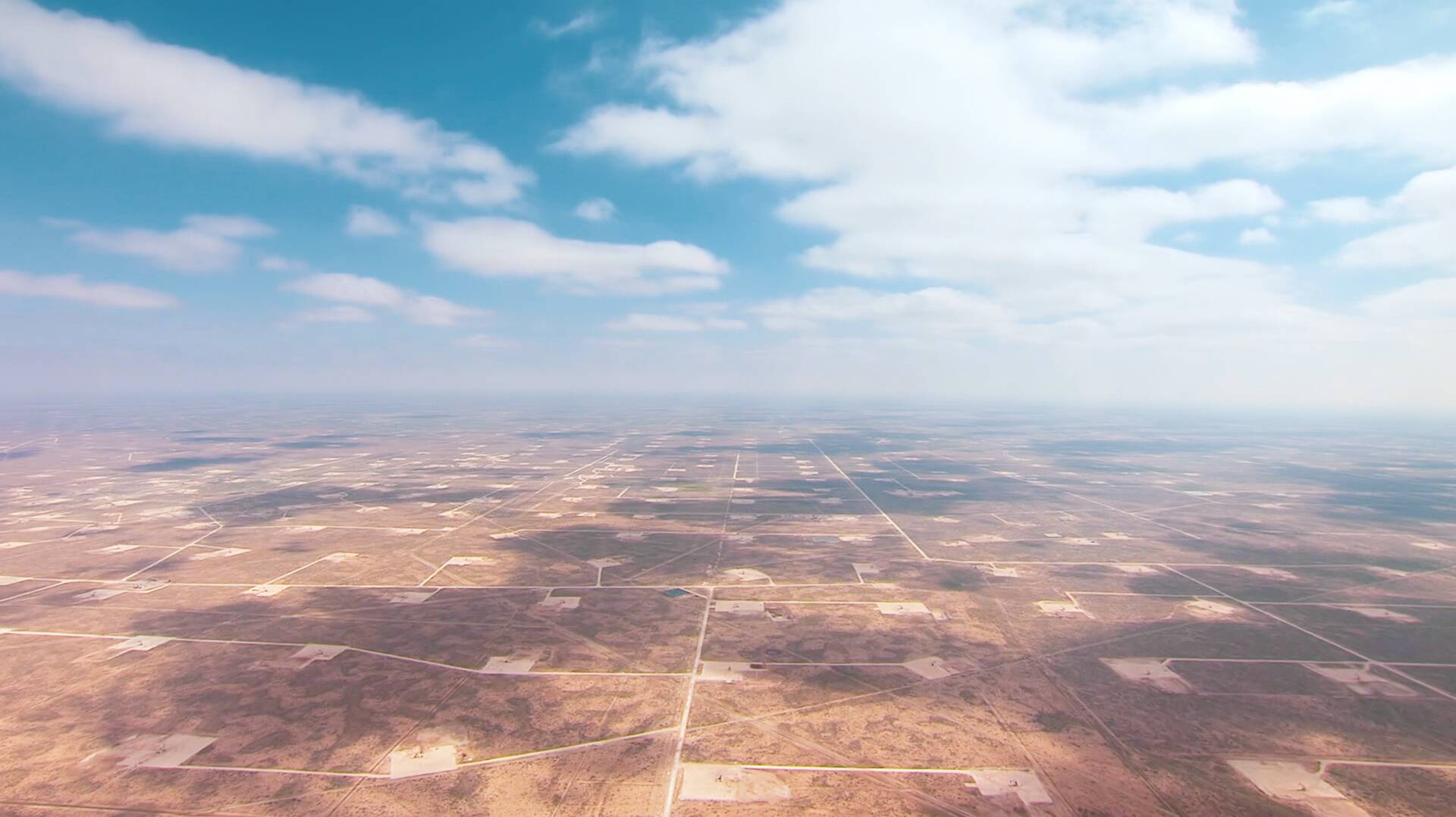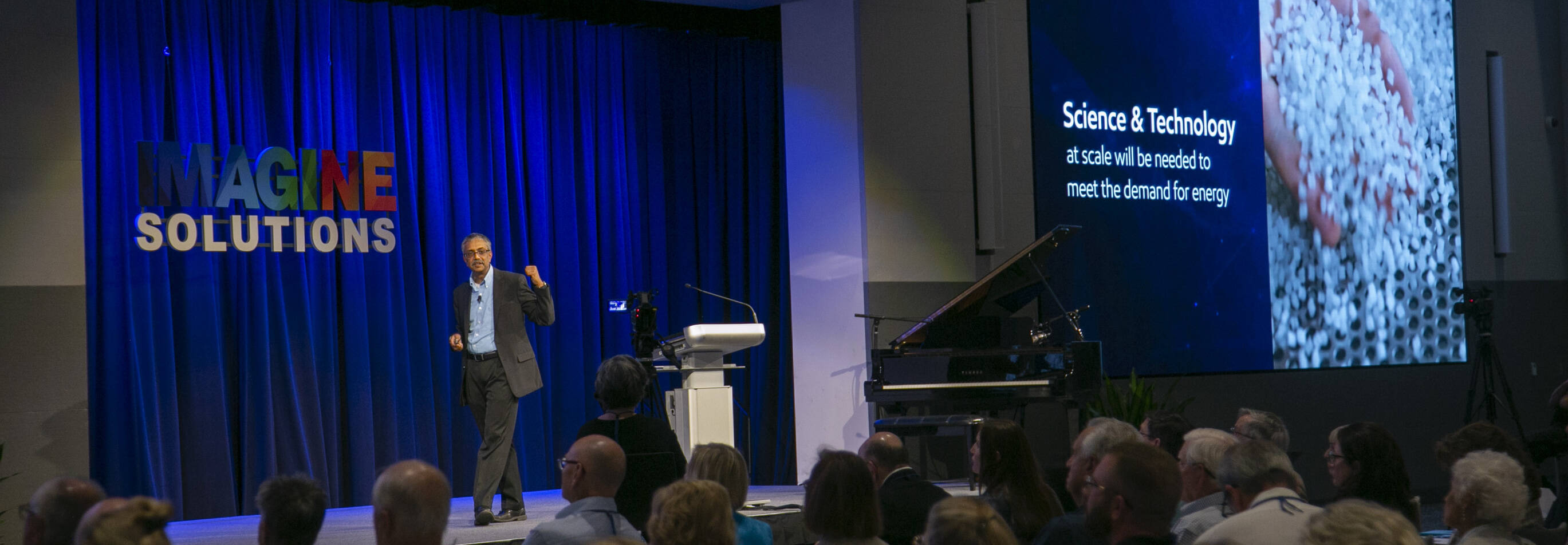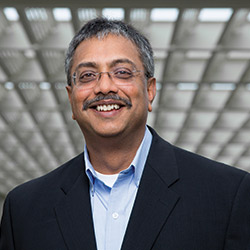selected item
Imagine that – developing energy, climate solutions with science and technology
Last week, I was invited to participate in the Imagine Solutions national conference in Naples, Florida. I listened to speakers talk about the incredibly inspiring work they’re doing to expand our understanding of the oceans, build personalized, on-demand human hearts, cure blindness, and encourage more civility in public discourse.
All of which formed a perfect segue for me to discuss a common theme that ran through their work – energy. It’s everywhere, and it makes these remarkable achievements possible.
“Imagining Solutions” is basically my job description as Technology Director at ExxonMobil. I work with a team that works every day to imagine – and develop, and engineer – solutions for some of the world’s most pressing challenges.
Some relate to things many of us in advanced economies takes for granted, like the availability and reliability of the energy that underpins modern life.
I asked the hundreds of people in attendance if any of them wondered if the lights would come on when they flipped the switch. If their personal devices charged last night, or if the elevator in their building would work when they punched the button.
None seemed concerned that these things would not work just as intended.
That’s because energy is baked into our lives so thoroughly – in our gadgets, the clothes we wear, the carpets we walk on, the roads we drive, the fuels powering our cars, trucks, boats, and planes that move people and things around – that we rarely give it a second thought.
So it’s easy sometimes to forget that nearly a billion people in parts of the world lack access to electricity. Many live subsistence lifestyles in grinding poverty. They worry about feeding their families and protecting themselves from the elements.
An even larger number – as many as 2.4 billion people according to the World Health Organization – lack clean, modern fuels and appliances for cooking and heating. Think about that. Several billion people using charcoal, animal dung, or crop waste to prepare food or heat their households. Of these, 3 million people die each year from indoor air pollution – deaths that are entirely avoidable.
The daily challenge my company works to address is to provide the energy and products that are critical for modern living, while finding ways to get energy to those who lack it so they can have the quality of life that many others enjoy.
But there’s an added challenge: Doing all this and reducing greenhouse gas emissions. Making this added challenge even more difficult is that currently available technologies are inadequate to meet the world’s energy needs while simultaneously moving toward a lower-emissions future. According to the International Energy Agency, only two of the 55 technologies needed to build such a future are currently on track.
So no doubt, our work is cut out for us: deliver energy today, while figuring how to reduce emissions for tomorrow.
It’s a heavy challenge, but not a daunting one. Like much of the work highlighted at the Imagine Solutions conference, it actually inspires and excites me.
In my 35 years at ExxonMobil, I’ve seen science, innovation, and engineering combine to spawn solutions I couldn’t have dreamed when I started in 1987.
Today, I actually can imagine big solutions to our biggest challenges.
I’m confident we’re going to find them. We’re working on technologies – carbon capture and storage, hydrogen, and biofuels, for example – that can help us reduce our own emissions and help others reduce theirs.
And while we expect to play an important role, we also know we can’t go it alone. That’s why we’re collaborating with others on ways to bring our size, scale, and geographical advantages to bear in the service of finding solutions.
We’re working with universities, national labs, start-ups, and other large companies looking to scale. And we recognize to make real progress a new approach will be required. Historically, large collaborative efforts have been done methodically, sequentially, essentially in series. Truth is, though, we need to move faster than that. We need to work in parallel.
Companies that understand scale need to work with universities to shape the research. Universities need to challenge and develop understanding of the principles that will underpin the technologies. And start-ups need to have supportive policies and markets to advance first deployments.
One more prerequisite: Companies (like ExxonMobil) that understand scale need to be fully integrated in the various aspects of this multi-stage process, whether advancing research, developing markets, or informing policy. We offer real-world project and operating expertise, science and engineering know-how that complements what governments, research institutions, NGOs, and others bring to the table.
I’ve learned over my long career to never underestimate the power of science and innovation. In our own lifetimes, we have all been amazed by the transformations created through innovations in medicine, communications, and our ever-evolving digital world. It’s been the same story in energy over many decades.
After a day filled with stories of how these pioneers in their fields are achieving breakthroughs that were once thought impossible, I walked away from the conference knowing that when we work together, we can do so much more than imagine solutions. We can deliver them.
Explore more

ExxonMobil at CERAWeek 2024: More is better, but not simple
Key takeaways:
- We're a technology company, working to meet society's evolving needs.
- Diversity of supply can help ensure energy security, which is crucial.
- We're reducing our own emissions and helping our customers reduce theirs.
2 min read
• March 19, 2024
ExxonMobil Chairman and CEO, Darren Woods, talks about reframing the climate challenge during the APEC CEO Summit

Thoughts on the energy transition
Everywhere you turn these days people are talking about the energy transition. The phrase has ranked among the buzziest of buzz words for some time. It’s the topic du jour at nearly every conference I attend, including – as its name suggests – the Reuters Global Energy Transition 2023 symposium held recently in New York.Landmark emissions-reduction project in Louisiana announced; CF Industries, ExxonMobil, EnLink Midstream to collaborate
IRVING, Texas – CF Industries, a leading global manufacturer of hydrogen and nitrogen products, has entered into the largest-of-its-kind commercial agreement with ExxonMobil to capture and permanently store up to 2 million metric tons of CO2 emissions annually from its manufacturing complex in Louisiana. Start-up for the project is scheduled for early 2025 and supports Louisiana’s objective of net zero CO2 emissions by 2050.
Methane emissions reduction and enabling technologies
Our commitment to reducing our methane emissions

